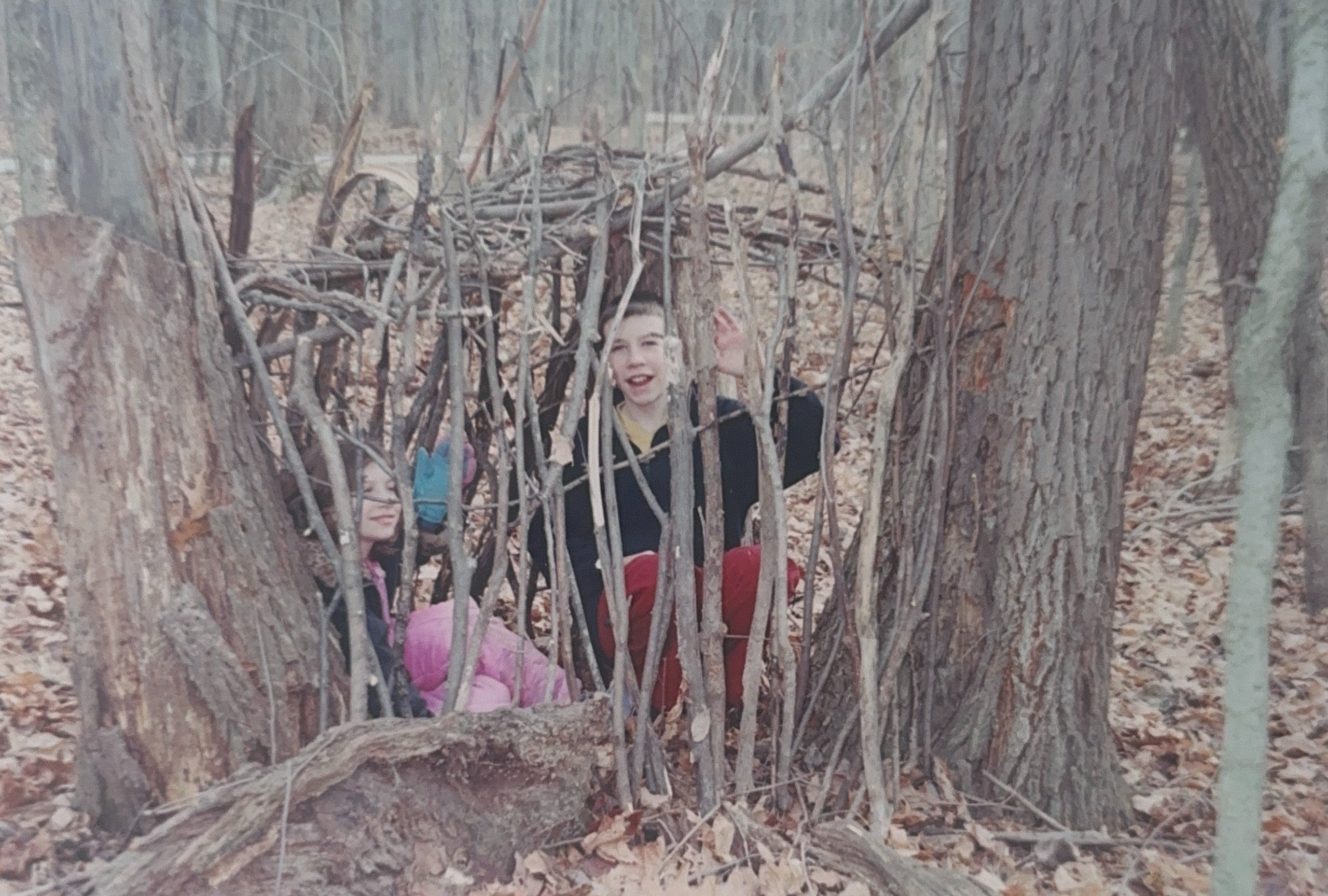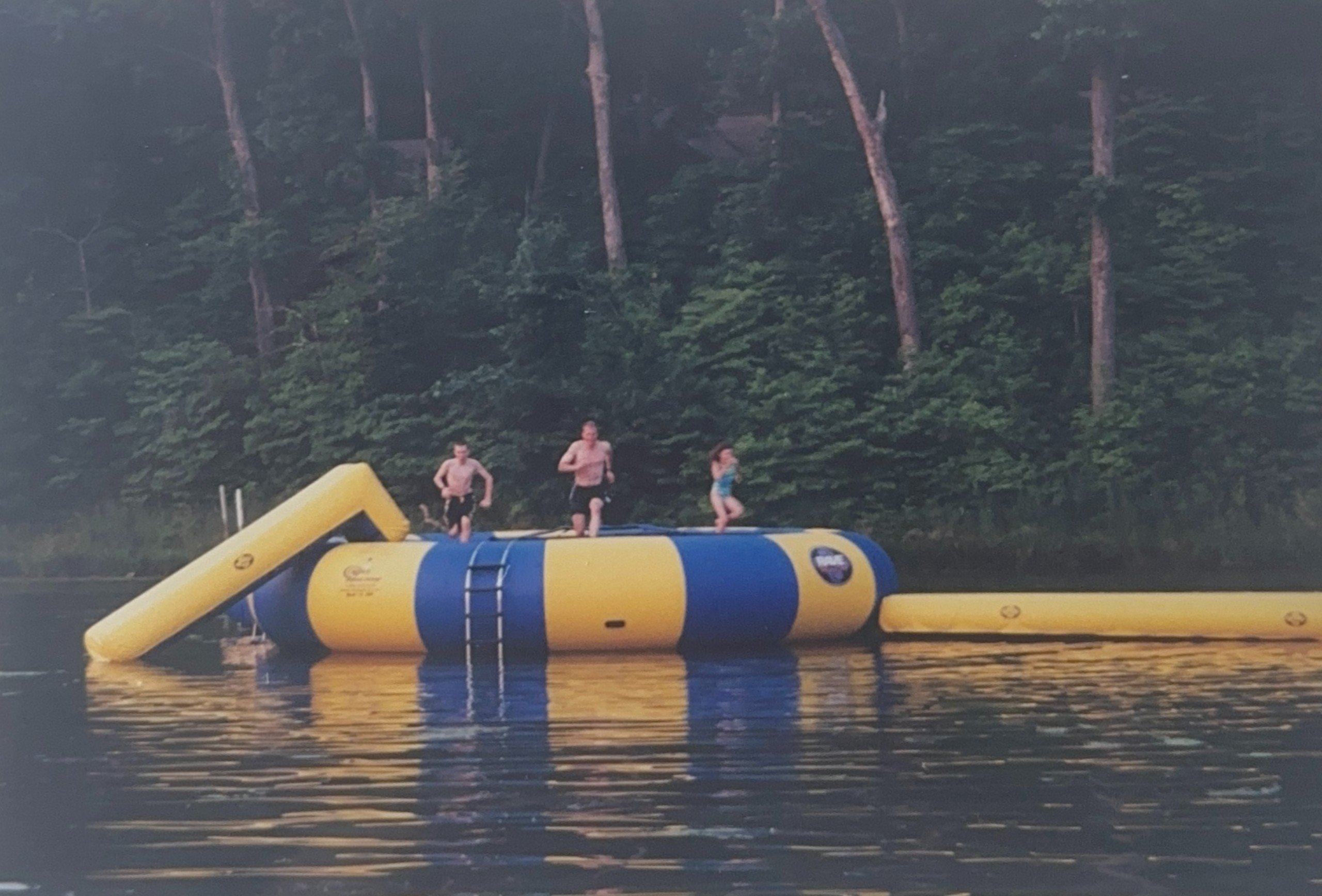
About 80 miles northwest of Indianapolis, Indiana’s capital and largest city, the Tippecanoe River bends tightly back on itself, creating a small valley surrounded by water. One hundred years ago, 30 acres of this undeveloped land were sold by a local farmer to the nearby town of Delphi, for $3,000, so that a summer camp could be built there.
Summer camps, alongside urban playgrounds and youth organizations such as the Boy Scouts, were popping up around the country at the time to provide children a healthy outdoor experience that could be both structured and exploratory. The YMCA, which opened many of these camps, was operating one in Bedford, a city in the southern part of the state, and wanted to build another somewhere north. If Delphi promised to maintain an active road to the property and a “friendly attitude” to the camp, the organization would open a camp there. In 1924, Camp Tecumseh—named after a Shawnee chief who opposed European expansion and fought in a battle nearby—hosted its first campers. Cabins weren’t complete, so campers stayed in tents, spending their days swimming in the Tippecanoe River that encompassed them.
The new camp proved popular and grew quickly and continuously. It bought surrounding land and designed, built, and renovated everything on it over time, expanding the property to just shy of 700 acres. When Camp Tecumseh celebrated its centennial, last year, it was hosting some 30,000 people annually, making it one of the largest camps in the country. When I was 10 years old, Camp Tecumseh became something else: home.
As a full-time resident, the artifice of my environment was obvious, but this is not unique. We all live among landscapes that have been redesigned over generations; most of us simply fail to consider them. Every day, I observed the design and redesign of my surroundings—an act that ultimately impacted who I would become.
My father joined the camp’s staff in the early aughts and, like all employees, we lived on the campgrounds year-round. Between the cabins and the climbing walls, across from the pools and the archery ranges, sat our place: a one-story ranch, the last house on an unpaved gravel road with three other homes. They all looked the same, just in different colors: white, blue, yellow, and tan (we lived in that one). Through the woods behind us, two cabins backed into the largest suspension bridge in Indiana that crossed a lake. A petting zoo and a field for horses filled the other side of the water. Down the hill, a sandy beach was stocked with boats.
The families of the staff intermingled with the campers, participating in camp activities: going to campfires, dropping into classes in basket-weaving or riflery. During the summer, we swam in its pools and swung from rope swings into the lake. Some families even joined campers for meals in the centrally located dining hall.
Inside, exposed wood beams and wood-paneled walls, as well as browns and tans and deep red hues, abounded. Taxidermied animals occupied ledges just below the ceiling. Everything was built by the camp maintenance and construction staff, designed to look like it belonged with everything else, as if it had always been there.

But it hadn’t always been there. The grounds we lived on bore little resemblance to the land sold for a camp at the turn of the century. Quite literally, the landscape was always in flux with new construction. The suspension bridge—and the lake it crossed—were built just a few years before we arrived.
The title of architectural historian Abigail A. Van Slyck’s 2010 book on the history of summer camps in the United States is an apt description of my surroundings, which felt both real and unreal, natural and human-made: A Manufactured Wilderness. “Camps were overtly anti-Modernist, self-consciously celebrating the past,” she writes. “These anti-Modern impulses took many forms, but a romanticized emulation of frontier life was chief among them.” Indeed, the design vernacular of Camp Tecumseh—a mix of aesthetics drawing from the American West and stereotypical Native American imagery—was meticulously implemented.
I was too young to see the faux nostalgia or the cultural appropriation, but the artificiality was not lost on me. Design decisions covered the smallest details, such as custom road signs, carved in wood. I remember noticing that the letters were in fonts I knew: Comic Sans, Cooper Black, Hobo. This was most obvious at the centrally located Creative Arts Center, a warehouse-style multipurpose room with a stage on one side and an indoor climbing wall on the other. Like something from Disney World, a façade was built around the outside to hide the standard building materials.
To walk around the building was to experience a flat simulation of an old town from the American West: a storefront, a saloon, a jail. There were false windows and painted doors. A concrete replica of the largest tree stump in Indiana sat nearby (the real one was on the other side of the state), blurring the lines between fact and fiction. Everything was designed to give campers a particular experience, a stage upon which they could leave their daily lives for a week to create memories, form friendships, and act out stories. For one week, a camper could be an explorer or a warrior or an athlete or a chef or an artist—or a family.
This, of course, is the power of design. It gives physical form to our desires, our interactions, our stories. Those forms then become the way we orient our days, shaping the experiences of our lives. Van Slyck writes that the layouts of most summer camps at the turn of the century borrowed the plan promoted by the Federal Housing Administration to structure new residential suburbs—another attempt at a manufactured existence.
Indeed, from the roads we take to get to work and the signs that guide us, right down to the phone we look at when we wake up, our entire lives are built upon design decisions often made long before they get to us. As Beatriz Colomina and Mark Wigley wrote in their 2015 book Are We Human?, “The entire globe has been encrusted by a geological layer of design.”
I wasn’t aware of any of this back then. In fact, despite the magical surroundings, all I wanted to do was leave. I avoided camp activities where I could, preferring to spend my time in my bedroom. Yet, I see now that it was at camp that I first decided I wanted to be a designer. In that room, in that environment, I spent my time making maps and designing buildings, drawing logos, and printing books.
Recently realizing that I was doing the same thing I was seeing all around me, I’ve come to see my time at camp in a new light. I was creating new worlds that could take me somewhere else, making new stories in service of a new experience. I now believe this is the highest order of design: to encourage imagination, create new possibilities, build new worlds.
Just before I turned 13, I got my wish: My dad took another job and we left Camp Tecumseh. When we landed in a new town, hundreds of miles away, I saw my new landscape with clear eyes—it too was designed.
“We shape our buildings,” as goes Winston Churchill’s oft-repeated line. “And afterwards our buildings shape us.” This is a never-ending cycle: our environments, built long before us, shape who we are, so that we can shape them again.
In that spirit, we are all participants in designing the world. “The fact is that the modern world is constantly being designed and redesigned, not by these over-publicized specialists,” wrote the midcentury designer George Nelson, “but by literally millions of people, most of whom do not think of themselves as designers, but who nonetheless are primarily responsible for the shape of the world.” This is the lesson I learned at camp: The world isn’t something that exists; it’s something designed. It’s up to all of us, working together, to make it what we want.